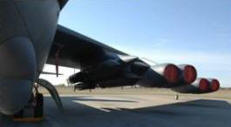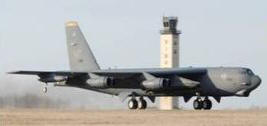
|
Richard Y. Newton III U.S. DOD Briefing on B-52 Munitions and the 'Bent Spear' Incident delivered 19 October 2007
[AUTHENTICITY CERTIFIED: Text version below transcribed directly from audio.] Thank you, Mr. Secretary. This afternoon, I will share with you what I can about how the weapons transfer error occurred, our corrective actions, and our efforts to ensure accountability. In the countless times our dedicated airmen have transferred weapons in our nation's arsenal, nothing like this has ever occurred. This was a failure to follow procedures, procedures which have proven to be sound. It involved a limited number of airmen at two bases. Our extensive six-week investigation found that this was an isolated incident and that the weapons never left the custody of airmen, were never unsecured, but clearly this incident is unacceptable to the people of the United States and to the United States Air Force. We owe the nation nothing less than adherence to the highest standards. In addition, our investigation found that there has been an erosion of adherence to weapons-handling standards at Minot Air Force Base and at Barksdale Air Force Base. We have acted quickly and decisively to rectify this. Because of this error, we are aggressively examining and implementing corrective measures to our weapons-handling and transfer process. Corrective actions will ensure our munitions are handled precisely and safely 100 percent of the time. This week, the commander of Air Combat Command relieved several officers. Minot's Wing commander and Maintenance Group commander and Barksdale's Operation Group commander received administrative action and were relieved of command. The commander of Air Combat Command also took four other specific actions to date at the group and squadron level, lieutenant colonel and below. But for privacy reasons we will not discuss specific positions, individuals, or actions. As you know, the Munitions Squadron commander at Minot Air Force Base was relieved shortly after this incident. The commander of Air Combat Command carefully considered individuals at all ranks and levels for accountability. In addition, he also took actions to temporarily or permanently decertify specific individuals from the Personnel Reliability Program. The Air Force Personnel Reliability Program ensures the reliability of Air Force personnel who handle, guard, and move our most sensitive weapons. The commander of Air Combat Command also tasked the 12th Air Force commander, Lieutenant General Seip, to review the report and independently assess the culpability of all Air Force members who were involved with the weapons transfer. Should the 12th Air Force commander determine disciplinary or adverse administrative action is appropriate for selected individuals, arrangements will be made to place those individuals under the jurisdiction of the 12th Air Force commander. As the general court-martial convening authority, Lieutenant General Seip has a variety of options at his disposal. With that said, I'll provide you an explanation of the incident and then I'll take your questions.
Let me walk you through the five procedural errors that occurred in conjunction with that mission that facilitated this serious and unprecedented incident. As you see here -- if we'll bring up slide 1, please -- on the morning of August 29th, a team of Minot airmen was dispatched to the base Weapons Storage Area to pick up and transport two pylons to a Barksdale B-52 aircraft. For those of you unfamiliar with the term "pylon," for our purposes today, a pylon is a self-contained package of six cruise missiles that can be quickly mounted to the wing of a B-52. What set this in motion, our investigation found, is that one of the two pylons for this flight, a tactical ferry mission, had not been properly prepared. Part of Air Combat Command's investigation determined that the reason it was not properly prepared was the fact that a formal scheduling process, for tracking the status of the missiles, had been subverted in favor of an informal process that did not identify this pylon as prepared for the flight. Okay, so let's have -- let's talk about what happened on August 29th. On that day, the first procedural error occurred around 8:20 in the morning, when airmen assigned to the Weapons Storage Area failed to examine all the pylons located in the storage area. The second procedural failure occurred when the crew operating the trailer that was moving the pylons to the aircraft began hooking up while the required pylon inspection was still underway. The third failure occurred when the crew failed to verify the payload before hooking it up to the trailer for transport. The crew is required to inspect the munitions before departing. They did not do that. The fourth failure occurred when the Minot Munitions Control Center failed to verify the status of the pylons being loaded at about 9:25 in the morning. The munitions control center failed to assess a database, as required, that would have alerted them that one of the pylons was not properly prepared for transfer. At this point, the wrong weapons, already in transit to the flight-line, and several critical safeguard procedures had been disregarded. The Minot munitions handlers then loaded the pylons onto the B-52, and they remained there overnight on a secure flight-line. A fifth failure occurred the next morning when the Barksdale-assigned B-52 instructor radar navigator neglected to check all missiles loaded for transport, as required. The instructor radar navigator performed only a spot check, and only on the right pylon, the one that had been properly prepared for transport. The pylon carrying the wrong weapons was never inspected. Those factors and disregard for procedures collectively contributed to this serious incident. The B-52 took off at 8:40 on the following day and arrived at Barksdale Air Force Base at 11:23 that very same morning. At Barksdale, the munitions personnel followed the correct procedures. They unloaded the weapons between 7:20 and 8:30 that evening, inspected them, and immediately reported the mistake and established appropriate security. Officials at Barksdale then notified the chain of command. We want to give you also a visual to help understand the sequence of events. On the screen to my left is a slide that depicts the points of failure.
At the bottom of the slide are images of the actual pylons leaving the hangar. This shows the pylon that should have been inspected and identified as not prepared for transfer.
Also depicted on the slide is a B-52 loaded and prepared for departure. Again the proper inspections and checklist procedures did not occur. This was the last opportunity for our airmen to identify the error before the aircraft took off. Now let me address our response. The Air Force acted swiftly when the incident occurred. Our actions have included: We've conducted an Air Force-wide stockpile inventory and verified no additional discrepancies. The commander of Air Combat Command, then General Ron Keys, directed this investigation be led by Major General Raaberg. As I stated, commanders have been relieved. Air Force Secretary Wynne directed nuclear surety inspections for nuclear-capable units with oversight of the Defense Threat Reduction Agency. All units inspected to date have received a satisfactory rating, the highest rating possible. The commander of Air Combat Command decertified the 5th Bomb Wing from specific missions and suspended tactical ferry operations. We ordered a one day stand-down of appropriate Air Force units, and the commander of Air Combat Command directed a one-day stand-down of his entire command. The Secretary of the Air Force and Chief of Staff sent messages to all airmen, emphasizing the critical importance of discipline, attention to detail, and responsibility. Senior Air Force leadership chartered a blue ribbon review, which is examining policies and procedures across all levels of organization, not just in Air Combat Command, but through the entire force. To conclude, this was an unacceptable error that resulted in an unprecedented string of procedural failures. We are accountable to Congress and we are accountable to the American people. I can assure everyone we're taking the corrective actions and continuing to examine our policies and our procedures to ensure the integrity of our mission. From all levels, the Air Force is committed to safely, securely, and reliably handling of our nation's weapons. And with that, I'll take your questions.
Further Reading: http://www.globalsecurity.org/military/library/news/2007/10/mil-071019-dod03.htm and https://en.wikipedia.org/wiki/August_30th_2007_nuclear_weapons_incident Audio, Video and Images of Newton Source: http://www.pentagonchannel.mil/ Procedural Errors Image(s) Source: http://www.globalsecurity.org/ Page Updated: 2/4/21 U.S. Copyright Status: This text = Property of AmericanRhetoric.com. Audio and Images #1 and #2 (Newton) = Public domain. Remaining images = Uncertain. |
|
|
© Copyright 2001-Present. |
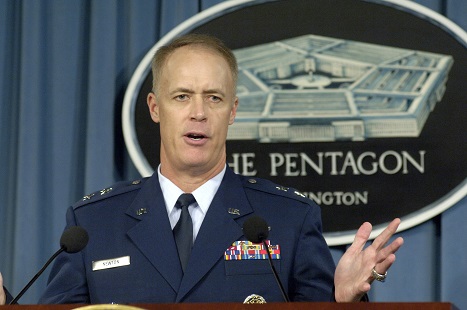
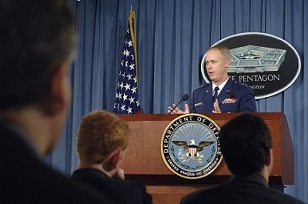 First off, a series of procedural breakdowns and
human errors led to the loading and transportation of weapons, weapons that
should not have been moved, from Minot Air Force Base, North Dakota, to
Barksdale Air Force Base, Louisiana. A Barksdale-assigned B-52 was on the ground
August 29th at Minot prepared to fly 12 cruise missiles back to Louisiana. In
accordance with international treaties, the Air Force was consolidating advanced
cruise missiles for eventual elimination.
First off, a series of procedural breakdowns and
human errors led to the loading and transportation of weapons, weapons that
should not have been moved, from Minot Air Force Base, North Dakota, to
Barksdale Air Force Base, Louisiana. A Barksdale-assigned B-52 was on the ground
August 29th at Minot prepared to fly 12 cruise missiles back to Louisiana. In
accordance with international treaties, the Air Force was consolidating advanced
cruise missiles for eventual elimination.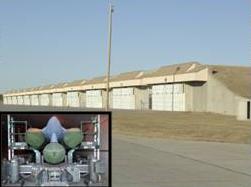 Moving clockwise, and starting in the upper right-hand side,
you see a standard hangar. This is where the procedural errors began. The doors
opened, our crews entered, and did not perform the required inspection.
Moving clockwise, and starting in the upper right-hand side,
you see a standard hangar. This is where the procedural errors began. The doors
opened, our crews entered, and did not perform the required inspection. The truck then pulls up too soon. At this point,
inspections still have not been completed.
The truck then pulls up too soon. At this point,
inspections still have not been completed.
